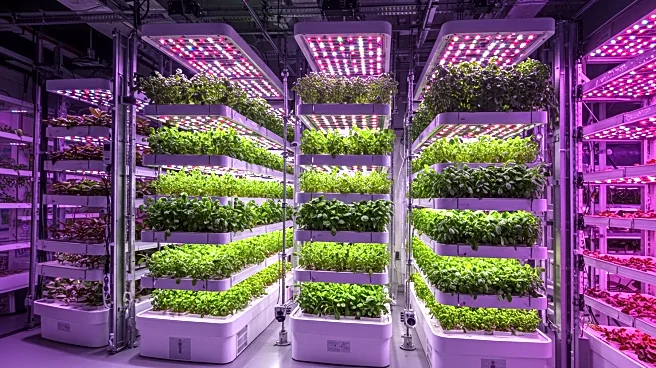Rapid Read • 8 min read
Vertical farming LED technology is transforming urban agriculture in the United States, particularly in cities like New York, Chicago, and Los Angeles. By 2025, over 70% of new urban farms are expected to utilize LED-powered vertical farming systems. This method involves cultivating crops in vertically stacked layers within controlled environments, maximizing space utilization and providing fresh local produce through sustainable methods. The use of Light Emitting Diodes (LEDs) allows for tailored light spectrums that enhance plant growth, yield, and nutritional content. Vertical farming addresses challenges such as land scarcity, climate change, and resource inefficiency, offering a path to year-round production and reduced resource waste.
AD
The adoption of vertical farming LED technology in urban areas is significant for several reasons. It addresses land scarcity by multiplying production per square foot, reduces environmental pressure by minimizing deforestation and biodiversity loss, and offers total climate control to combat weather unpredictability. Additionally, vertical farming uses up to 95% less water than traditional farming methods, localizes food supply to cut transport emissions, and provides fresh, chemical-free produce. This approach supports sustainability goals and enhances food security, making it a critical component of urban agriculture in the face of global challenges.
As vertical farming continues to evolve, integration with renewable energy sources like solar and wind is expected to enhance sustainability further. The technology will likely expand to include a broader range of crops through genetic optimization and vertical net farming. Urban food maps may integrate vertical farms to optimize supply, nutrition, and carbon offsetting. The future may also see controlled, modular vertical farming units used in remote food production scenarios, such as disaster relief or off-planet settlements.
Vertical farming LED technology not only improves agricultural efficiency but also contributes to urban sustainability by repurposing unused infrastructure and reducing chemical runoff. It addresses social goals by providing accessibility to fresh food in urban areas, potentially alleviating food deserts. The technology's role in climate change mitigation is crucial, as it reduces emissions and preserves natural habitats outside city limits.
AD
More Stories You Might Enjoy












